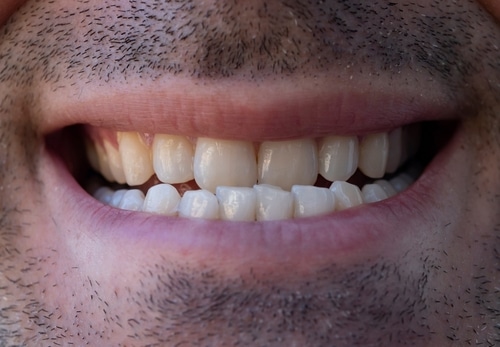Your smile is a unique expression of your personality, but sometimes dental concerns like underbites can impact both aesthetics and functionality. In this article, we’ll delve into the world of underbites, exploring their causes, effects, and potential treatment options. Whether you’re curious about your own smile or looking for insights to help others, understanding underbites is the first step toward a confident and healthy grin.
Demystifying Underbites:
What is an Underbite?
An underbite occurs when the lower front teeth protrude forward, overlapping the upper front teeth. This misalignment can create a noticeable asymmetry in the smile and may impact proper jaw function.
Causes of Underbites:
- Genetics: Family history plays a significant role in the development of underbites. If parents or siblings have had underbites, there’s a higher likelihood of inheriting this dental misalignment.
- Jaw and Tooth Development: Irregularities in jaw and tooth development, especially during childhood, can contribute to the formation of underbites.
- Bad Habits: Prolonged habits such as thumb-sucking or extended pacifier use during early childhood may affect jaw development and contribute to underbites.
Signs and Effects of Underbites:
Identifying an Underbite:
- Visually noticeable protrusion of lower front teeth.
- Misaligned jaw causing the lower jaw to extend beyond the upper jaw.
Effects of Underbites:
- Aesthetic Concerns: Underbites can impact facial symmetry and the overall appearance of the smile.
- Chewing and Speech Difficulties: Functional issues may arise, affecting chewing and causing speech impediments in some cases.
Treatment Options for Underbites:
Orthodontic Solutions:
- Braces: Traditional braces are effective in gradually correcting underbites by applying gentle pressure to shift the teeth into proper alignment.
- Invisalign: For a more discreet option, Invisalign can be used to address mild to moderate underbites. These clear aligners provide a comfortable and virtually invisible solution.
Surgical Intervention:
In severe cases, orthognathic surgery may be recommended to reposition the jaw and correct the underbite. This is typically done in collaboration with orthodontic treatment for comprehensive results.
Seeking Professional Guidance:
If you’re wondering whether you have an underbite or if it requires treatment, consulting with an orthodontic specialist is crucial. They can conduct a thorough examination, discuss your options, and create a personalized treatment plan tailored to your unique needs.
Conclusion:
Understanding underbites is the first step towards achieving a balanced and confident smile. Whether it’s for yourself or someone you care about, recognizing the causes, signs, and treatment options for underbites empowers you to make informed decisions about dental health. Embrace the journey to a harmonious smile, and let the world see the true radiance of your unique expression.


